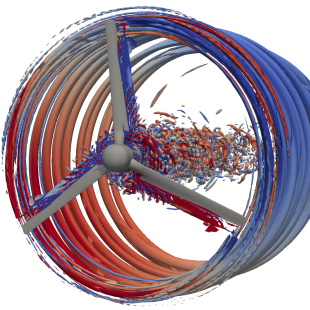A major challenge for wind and tidal turbines is the large amplitude, unsteady load that they experience (Scarlett and Viola 2020). For tidal turbines, the largest fluctuations are due to ocean waves, and for both wind and tidal turbines, turbulence and vertical shear in the flow stream lead to additional load fluctuations (Scarlett et al. 2019). Inspired by the extraordinary abilities of birds to fly in turbulence, we are now developing morphing blades that can mitigate load fluctuations without compromising the mean load and, thus, the power harvested by wind and tidal turbines (Pisetta et al, 2022). VOILAb is currently leading the £1M project Morphing Blades, funded by the UK Engineering and Physical Science Research Council, to demonstrate at model-scale a novel technology to reduce unsteady-loading for wind and tidal turbines, improving resilience and reliability, and decrease the levelised cost of energy of these two critical renewable energy sectors. We have demonstrated this technology on a 1.2-m-turbine (Gambuzza et al 2023); we patented two morphing blade designs (PCT/GB2024/050216 and PCT/GB2024/050899); and we are now developing increasingly reliable and efficient morphing blades for the wind and tidal energy sectors.
Flagship Project
Find out more about our flagship project, funded by the Engineering and Physical Science Research Council, Morphing-Blades: New-Concept Tidal Turbine Blades for Unsteady Load Mitigation.



